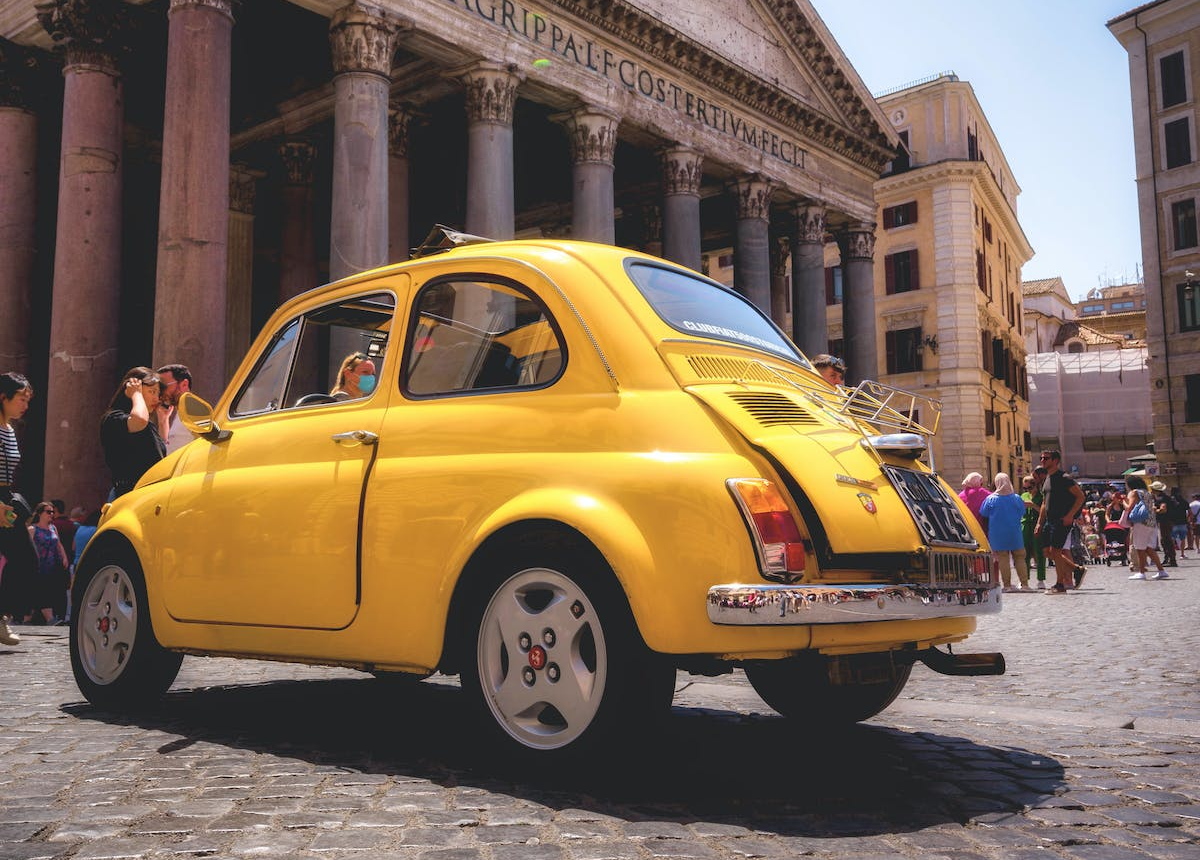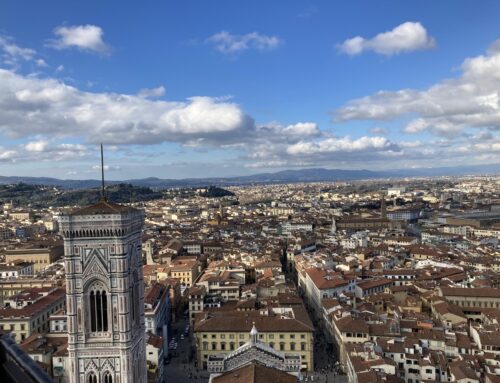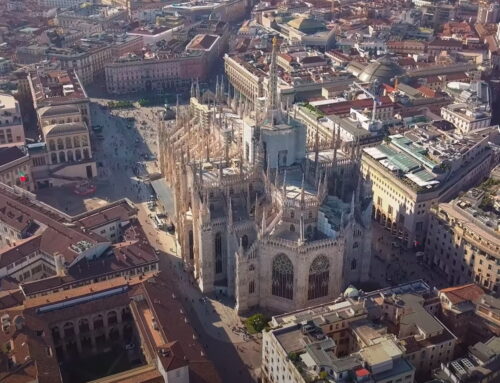Everything you need to know about renting a car in Italy!
If you are traveling to Italy, and intend to visit a couple or more of the many beautiful small towns throughout the country, then you may want to rent a car.
With that in mind, we’ve put together this guide for renting a car in Italy.
Before we get started, it should be noted that we highly recommend renting your car through Discover Cars.
Discover Cars will search the major international and local car rental companies to give you the best options for your rental car in Italy. You can cancel your rental 48 hours before your rental, and they also offer inexpensive, full insurance coverage.
Now, let’s find out everything else you need to know about renting a car in Italy!
* Disclaimer – we are an affiliate of Discover Cars, and if you click on the related links and ultimately rent a car from them, we may receive a commission.
For more information, contact the company directly. You can also find reviews of Discover Cars at Trustpilot, where they receive 4.6 out of 5 stars.
When is renting a car your best travel option?
Here are the three main reasons that making renting a car in Italy a smart choice…
- You want to visit small towns away from the major cities
- You are traveling with a lot of luggage
- You are traveling with children
 While traveling in Italy is pretty easy to do by train, the trains won’t take you to many of the small towns that you may want to visit outside of the cities.
While traveling in Italy is pretty easy to do by train, the trains won’t take you to many of the small towns that you may want to visit outside of the cities.
This is particularly the case once you head to regions in southern Italy such as Puglia and Basilicata, as well as the islands of Sicily and Sardinia. Therefore, renting a car is a better option.
If you have a lot of luggage, using the trains can be a real hassle. While the high-speed trains are nice and comfortable, the regional trains that operate between the smaller cities can be crowded, and you may not have assigned seats.
We can attest that traveling the regional trains in Sicily is like getting on a New York City subway at rush hour. Now, add several pieces of luggage to that equation, and you can picture the craziness!
And, when you are traveling with children, those crowded trains can be quite problematic, especially if the ride is going to be an hour or more.
Reasons why renting a car in Italy may not be a good option
There are also plenty of reasons why you may not want to rent a car in Italy.
If you are mainly traveling between major cities such as the classic Italian journey of Venice to Florence to Rome, you don’t need a car. The rail system works perfectly well between these major cities.
One of the major cons of renting a car in Italy is that gas is expensive, and there are many toll roads. So, if you are trying to keep your costs down, you’ll want to stick with public transportation.
 Also, when you DO travel to the small towns, there are often zones within the towns where cars are not allowed. Therefore, you will need to pay attention to the signs so you don’t get fined.
Also, when you DO travel to the small towns, there are often zones within the towns where cars are not allowed. Therefore, you will need to pay attention to the signs so you don’t get fined.
Parking can be an issue in these small towns as well. You will need to plan your trip ahead of time so you know exactly where to park when you reach your destination.
Lastly, you definitely don’t want to find yourself driving through major cities, as they can be difficult to navigate. When you combine heavy traffic and a labyrinth of small streets in historic areas, you can just imagine how easy it is to get lost.
The best and worst areas to explore by car in Italy
Here are the Regions in Italy that you will definitely want to see by car…
Sicily

Tuscan Countryside
Sardinia
Tuscany – outside of Florence
Umbria
Puglia/Basilicata/Calabria
Piedmont
Lombardy – if you are visiting the Italian Lakes
Sicily is the largest island in the Mediterranean, but the rail system tends to hug the coasts. Therefore, if you are traveling from east to west or north to south, you will want to rent a car.
Sardinia is the second largest island in the Mediterranean and the rail system is even more antiquated than in Sicily. Unless you just intend to spend your time at one location, you’ll want to rent a car.
There are some instances when traveling about Tuscany that you will not need a car. This is the case when heading to Siena, or Pisa.
The Cinque Terre is also accessible by train from Florence, and it is not recommended you drive to those towns due to their small size and lack of parking.
Otherwise, you definitely want to rent a car when driving through Tuscany and Umbria, both notable for their wines and olive oil.
Puglia, Basilicata and Calabria are the regions that form the boot of Italy. Rail service is simply not adequate for getting around those areas, so you will definitely want to get a car to explore.
Northern Italy, comprised of regions such as Piedmont, Lombardy, Aosta Valley, and Trentino/South Tyrol can also be explored by car.
Train service is available between the major cities, such as Turin and Milan, but outside those areas, a car is a great way to travel and see the amazing sites in these regions.
If you are visiting Rome in the Lazio region, it’s just best to avoid renting a car. While there are some pretty towns outside of Rome, just hire a transport or utilize public transportation.
Naples and the Amalfi Coast are also not great areas to drive around. Naples is a sprawling city with significant traffic, and Amalfi Coast has very narrow roads where you may also have to deal with cyclists and pedestrians.
How to rent a car in Italy
Renting a car in Italy is actually quite easy.
First of all, you will need your drivers license in order to rent a car in Italy. Additionally, you will need an International Drivers Permit if you are not a resident in Europe.
To pick up your International Drivers Permit, head on over to your local AAA office. It’ll cost you about $20.
When you are ready to pick up your car rental, you’ll need your passport as well.
As mentioned, we recommend finding your rental car at Discover Cars. There you will be able to type in where you are heading to and you will find the options available.
Be sure to check out the ratings for the vehicles and services. While you will find some low priced options, those may not always be the best options.
When you rent a car in Italy, the rental rate automatically includes a Collision Damage Waiver insurance policy. This is by law, so you don’t have a choice to waive this coverage. This is quite basic and has a high deductible.
If you want better coverage, you can opt to pay extra, and this option will be available when you rent through Discover Cars. We actually recommend opting for the full coverage offered there. This may cost upwards of 30 Euros per day, but it will give you more peace of mind.
When you pick up your car, make sure you inspect it completely and take photos of any scratches and dents on the exterior and any damage on the interior. Make note of those items to your rental agent before driving the vehicle off the lot.
Also, be sure to check the fuel gauge and pay attention to the fine print in the rental agreement about how much gas you must have in the tank when you return the vehicle.
Like anywhere, you will get gouged if you return the vehicle with less fuel then when you picked it up.
Getting around Italy with a rental car
When traveling around Italy by car, you’ll typically be fine by using the Google Maps app on your smart phone. Google Maps will also typically update more often than a GPS that may come with the rental car.
With that said, it may also be a good idea to have some paper maps handy as well.
Here are some Italian driving laws…
Seatbelts are required for all passengers
You must drive with headlights on outside of urban areas
You can’t turn right when the light is red
No texting
 The alcohol intoxication limit is 0.05%… probably no more than two glasses of wine for most people, maybe just one for some
The alcohol intoxication limit is 0.05%… probably no more than two glasses of wine for most people, maybe just one for some
Limited traffic zones (ZTL) – these are found in many small towns that have narrow streets. Pay attention for these signs, as there may be cameras installed that will identify your vehicle if you drive into these zones illegally. Only residents with permits are allowed in these zones unless otherwise indicated.
Speed limits where traffic flows smoothly typically ranges from 50 KM/hour in urban areas up to 130 KM/hour on the Autostrada. These speed limits will be lower in poor weather.
Speed limit monitoring
Over 2,500 KM of Autostrada are covered by the Safety Tutor. The Safety Tutor monitors your speed between two points. If your average speed is 5% above the speed limit, you will be fined.
In many other areas, the speed limits are monitored by speed cameras.
Driving in Italy – Is it safe to drive in Italy?
 Driving in Italy is similar to driving in the U.S. Some people abide strictly by the laws, while others merely look at them as suggestions.
Driving in Italy is similar to driving in the U.S. Some people abide strictly by the laws, while others merely look at them as suggestions.
Similar to the U.S., impatient drivers will tailgate. Just move over and let them pass if you are in the passing lane. If you are in the right lane, or there is only one lane, don’t be offended. Stick with the speed limit.
In many areas, the roads are narrow and curvy. If you, or anyone riding with you is prone to car sickness, they should know ahead of time what the driving conditions will be like so they can take precautions!
In the urban areas, pedestrians are everywhere, so be on the lookout!
In the rural areas, look out for cyclists… cycling is a huge recreational sport in Italy.
Drivers who want to pass you will often flash their lights. Also, it is illegal to pass on the right in Italy, so stick to the right lane unless passing. Don’t be a left lane hog as is so often the case here in the U.S.
Toll roads
In Italy, a telepass device allows you to continue through a toll station without stopping. It will beep as you go through.
Otherwise, you pay with cash or a credit card.
Toll roads often have facilities similar to what you will find in the U.S. to allow for re-fueling and to grab a bite to eat.
Getting gas
 Gas stations offer self serve and full service fueling. While there is self service, this is done through a separate payment machine away from the pump.
Gas stations offer self serve and full service fueling. While there is self service, this is done through a separate payment machine away from the pump.
To operate it, you note the pump you parked next to, enter your payment (credit, debit or cash), and select the pump number. Then you go fill up.
These machines will not typically give you change, and they may not accept a U.S. credit card. So, keep some smaller Euro bills handy.
Gas stations are typically not open 24/7, but you may still be able to get gas at the pump, depending on the station. Not all gas stations will have this feature.
In general, gas stations are open about 12 hours a day, with a break for lunch.
Gasolio is the equivalent of diesel, while benzina = gasoline (look for the green signage).
Final thoughts
As you can see, there is a lot to consider before you rent a car in Italy.
Again, the key points are…
What are your travel plans? Do you want to travel outside of the cities? Then, in many cases you will want to rent a car.
Are you traveling with children? Will you have much luggage? What is your budget?
Self driving is an excellent way to see much of what Italy has to offer. And, we recommend checking out Discover Cars to find your best deal on a rental car in Italy.
Just click on the banner below to get started.







